Body Image: The Secret Hiding Behind the Suit
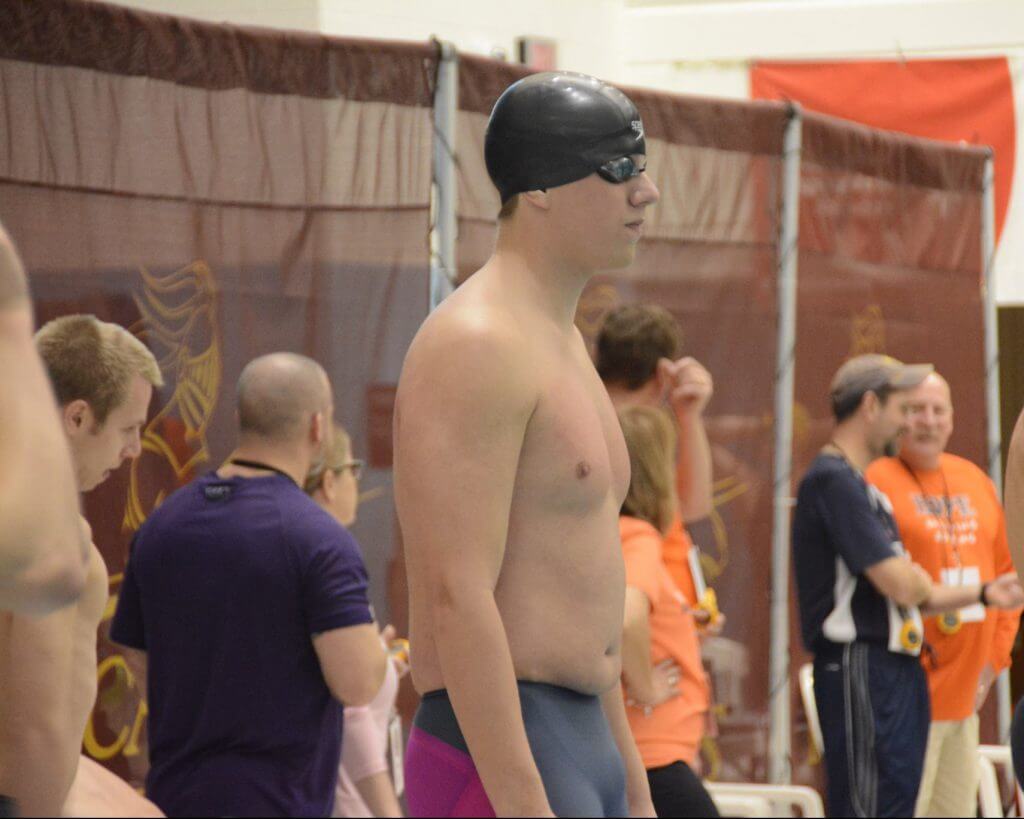
Commentary by Nick Pecoraro, Swimming World College Intern.
As you enter the pool deck, what is the first thing you notice? Is it the immediate aroma of chlorine, the wet tiles against your feet, or the sounds of water splashing around as your teammates warm up?
What about the many eyes staring at you – exposed in your suit?
For some, walking onto the pool deck is a mundane, routine task. For others, it can be an anxiety-provoking experience. Not many would admit that body image is a pressing issue in the swimming world, so why investigate?
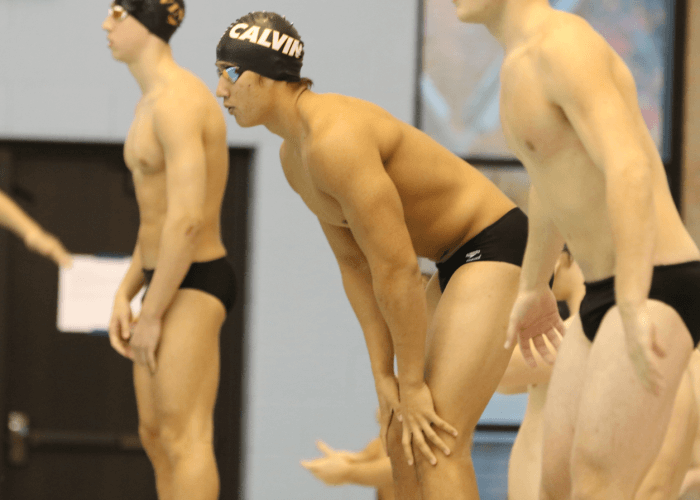
Photo Courtesy: Jeremy Crawford
Jake Lensing is one of many swimmers who would say this is a pressing issue. Because of his body image insecurities, Lensing performs core and lifting workouts twice a day – even in the middle of the grueling swim season – to maintain his musculature. “When you look in the mirror a lot, like a lot a lot, you notice small changes in your body. One day my obliques may be showing a little bit more than the day before, or my veins may be more prominent another week. I never really see the same person everyday,” he says.
When headed down the wrong path, body image pressures can quickly become a dangerous issue for swimmers. How? Read on and find out!
How Many Are Hiding Behind Their Suits?
Researchers conducting a study about body image in competitive swimming found that 51.7 percent of the female collegiate swimmers surveyed agreed that there were weight pressures within the swimming world. A similar ESPN survey found among 200 NCAA Division I female athletes, 68 percent experienced pressures to be “pretty,” and 20 percent reported a coach having called them “fat.”
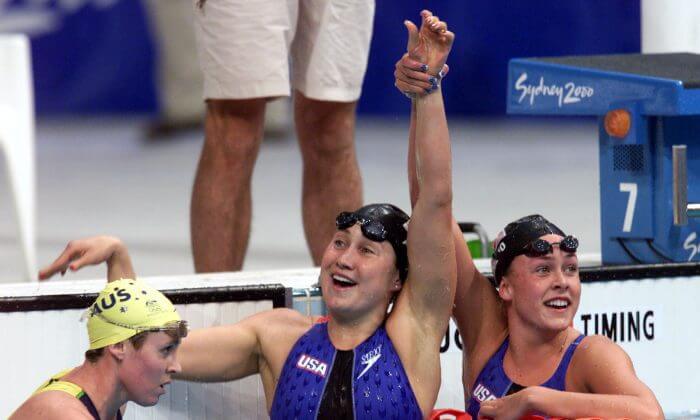
Photo Courtesy: Epoch Times
Misty Hyman, a 2000 Olympic gold medalist, confessed in an interview with USA Today Sports that she suffered from an eating disorder for many years: “Part of it was my own insecurities; part of it was my own control – the sense of being in control or something I could control.”
Along with women, men also struggle with this issue. Over 1,000 men in the UK were asked in a poll about their body image pressures. Of men ages 18 to 24, 45 percent of them admitted to having pressure to look perfect. Yet a more alarming statistic found that roughly four in five men found it difficult to talk about their body insecurities. This shows men are more likely to not seek help, which can result in more damaging behaviors toward their bodies.
Why Is This Happening?
Swimmers often wear smaller suits to reduce drag and swim faster. Courtney Howard, a writer for Eating Disorder Hope, discovered that swimmers wearing these suits can develop a distorted body image, as your features are exposed and compressed in extreme ways.
As you squeeze into tight-fitting suits (or lack thereof for the guys wearing swim briefs), your body can look different in many ways. Lensing admitted to feeling fat when putting on a jammer for the first time, so he would rather settle for the smaller practice suits. Other swimmers would rather hide in a less revealing suit.
Yet why are swimmers – athletes who spend countless hours burning calories – fretting about how their body looks?
Unrealistic Media Standards
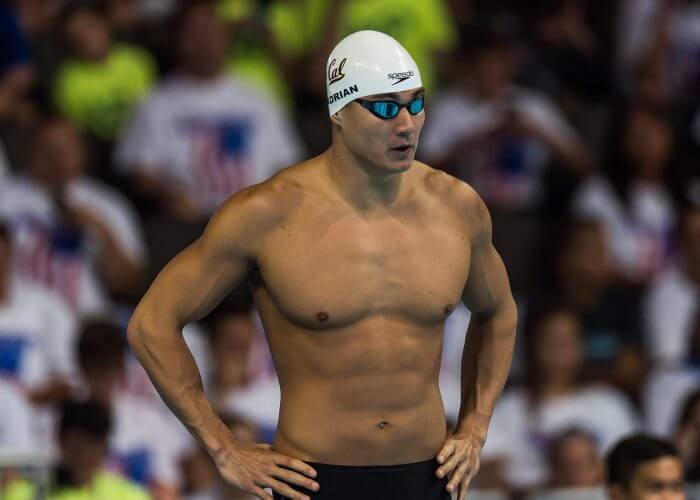
Photo Courtesy: Peter H. Bick
Claire Tiley observes how the media portrays unattainable beauty ideals in television, social media and films. These published images are often altered or filtered, yet they are popularized so much that it creates immense pressure to attain this perfection. People then feel forced to achieve these impossibly high standards that more often than not are unattainable, knocking down their confidence and self-esteem.
The media popularizes the best of the best, often putting health extremes in the spotlight. Swimmers often have idols – like Nathan Adrian and Natalie Coughlin – who exemplify the swimmer look: toned muscles, broad shoulders and chiseled, six-pack abs.
Unrelenting Self-Expectations
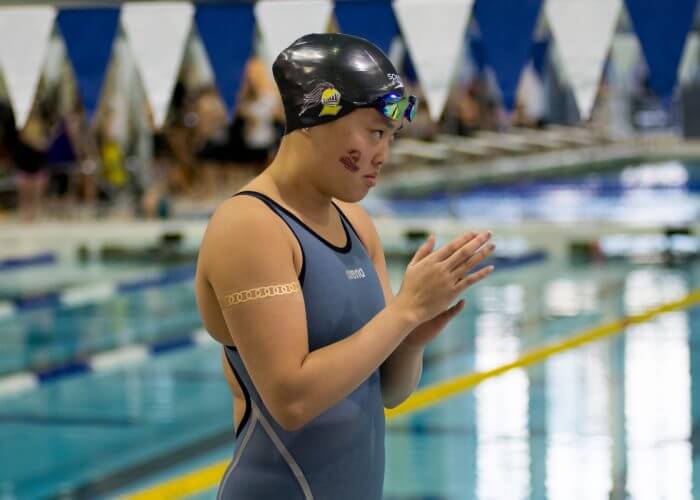
Photo Courtesy: Dan Vos
Howard also researched how the intense atmosphere of swimming can form extreme internal pressure. In swimming, you are not only competing against others but also against yourself. Howard says, “Though often an admirable quality in athletes, this constant pursuit of self-improvement and perfection can bleed into other realms of swimmer’s life, including eating patterns and weight management.”
Dr. James Greenblatt also found similar characteristics in those with anorexia and high-performing athletes, including the following characteristics: high self-expectations, perfectionism, competitiveness, hyperactivity, preoccupation with weight and dieting, and a tendency toward depression.
When tapering and cutting down on yardage at the end of the swim season, Lensing admitted to going on a no-carb diet to stay lean (which is not recommended for high performance sports).
Two Different Bodies
In a study published in the European Eating Disorders Review in 2011, the researchers reported that athletes experience two different body images – one for sports and one for their lives outside sports. For example, a female swimmer might feel good about her shoulders in the pool but insecure when shopping for clothes. Similarly, a male swimmer may feel a bit insecure about his arm size when in the gym with a bodybuilder but feel good about his strength in the water.
How Do We End This?
Though body image issues are complex and there are no quick fixes, we can take a few steps toward improving self esteem and body image.
Everyone’s Body is Different

Photo Courtesy: Karl Komarek
Diana Pimer outlines a crucial detail when considering a swimmer’s body image: “Everybody’s body compositions are different. Maybe his or her wingspan is a bit longer than yours, but that doesn’t mean they are faster than you.”
That’s right – all bodies are different. For example, when looking at top US breaststrokers Kevin Cordes and Cody Miller, Cordes stands five inches taller than Miller. However, at the 2016 US Olympic Trials, only eight-one hundredths of a second separated them in the 100 breast. Janet Evans stands at only 5 feet 5 inches tall but held world records in the 400 and 800 free that stood for almost 20 years!
Swimming is a very individualized sport. Just like all swimmers’ training is different, so are their body types. If the swimming world can recognize this fact, then we can take steps toward feeling comfortable in our own skin.
Learning to Accept Your Body Image
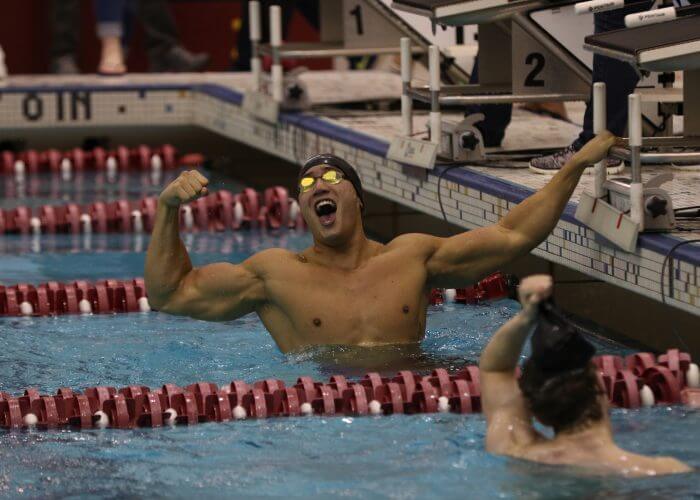
Photo Courtesy: Jeremy Crawford
“Swimming has definitely helped me become more accepting of myself. You see everyone else on deck wearing nothing but a swim suit and is comfortable in their skin; there is no reason I should be uncomfortable in mine,” Lensing comments.
Jenn Hand of the Huffington Post preaches, “You can’t hate, criticize, and berate your body enough to create lasting change. When you do accept where you are, that’s when you can begin to change.” Even if you want to add some muscle or lose a few pounds, beating yourself up will get you nowhere. Many swimmers who struggle with their body image have only one big enemy: themselves.
In Lensing’s own words, “Swimming is not a bodybuilding competition. People are here to watch you swim. You’re here to drop times and make friends.” Amidst the competitive nature of swimming, Lensing realizes that looking good for the crowd or maintaining a certain body weight is not what swimming is all about – it should be about having fun competing!
While you can often be your own worst critic, you can also become your own biggest cheerleader through improving your self-perception and seeking help. If you or a loved one is struggling with an eating disorder, call 1-800-931-2237 or the National Suicide Prevention Lifeline at 1-800-273-8255.
All commentaries are the opinion of the author and do not necessarily reflect the views of Swimming World Magazine nor its staff.



